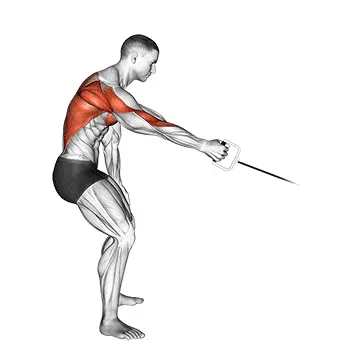Front Lever

Muscles Involved
The front lever is an advanced calisthenics exercise that primarily targets the muscles of the upper body and core. The primary muscles engaged during this exercise include the latissimus dorsi, which is essential for pulling movements and shoulder stabilization, and the rectus abdominis, crucial for core stability. Additionally, the front lever involves secondary muscles such as the rhomboids, trapezius, and pectorals, which assist in supporting the body’s position. The biceps and forearms also play a significant role in grip strength and pulling power, making this not only a core and back workout but also a test of overall body control and strength.
Top Mistakes
- Uneven body positioning: Allowing the body to sag at the hips can compromise form and reduce effectiveness.
- Overgripping the bar: Excessively tensing the grip can lead to fatigue and reduce control.
- Failure to engage the core: Neglecting core tension can disrupt balance and stability during the lift.
- Incorrect shoulder positioning: Letting the shoulders rise towards the ears rather than keeping them down and back can lead to injury.
Execution Tips
- Start with a proper warm-up focused on shoulder and core mobility to prevent injury.
- Begin with a tuck lever position (knees pulled to chest) to build strength gradually before progressing to a full front lever.
- Engage the core and consciously pull the shoulder blades down and together while maintaining a straight line from head to toe.
- Focus on breath control; exhale as you lift and hold the position to maintain tension.
Workouts
Incorporate the front lever into a comprehensive workout regimen by performing it as part of a pull-focused or calisthenics session. A recommended structure includes:
- 3-5 sets of front levers, holding for 5-10 seconds or as long as possible while maintaining form.
- To build strength, supplement with exercises like rows, pull-ups, or negative front levers.
- Include rest periods of 60-90 seconds between sets to recover adequately.
Conclusion
The front lever is not only a stunning display of strength and control but also delivers immense benefits for building upper body and core strength. Mastering this exercise can enhance muscle definition, improve grip strength, and increase overall athletic performance. By avoiding common mistakes, executing with proper form, and integrating it effectively into your workout routine, you can maximize the gains from this challenging yet rewarding exercise.



